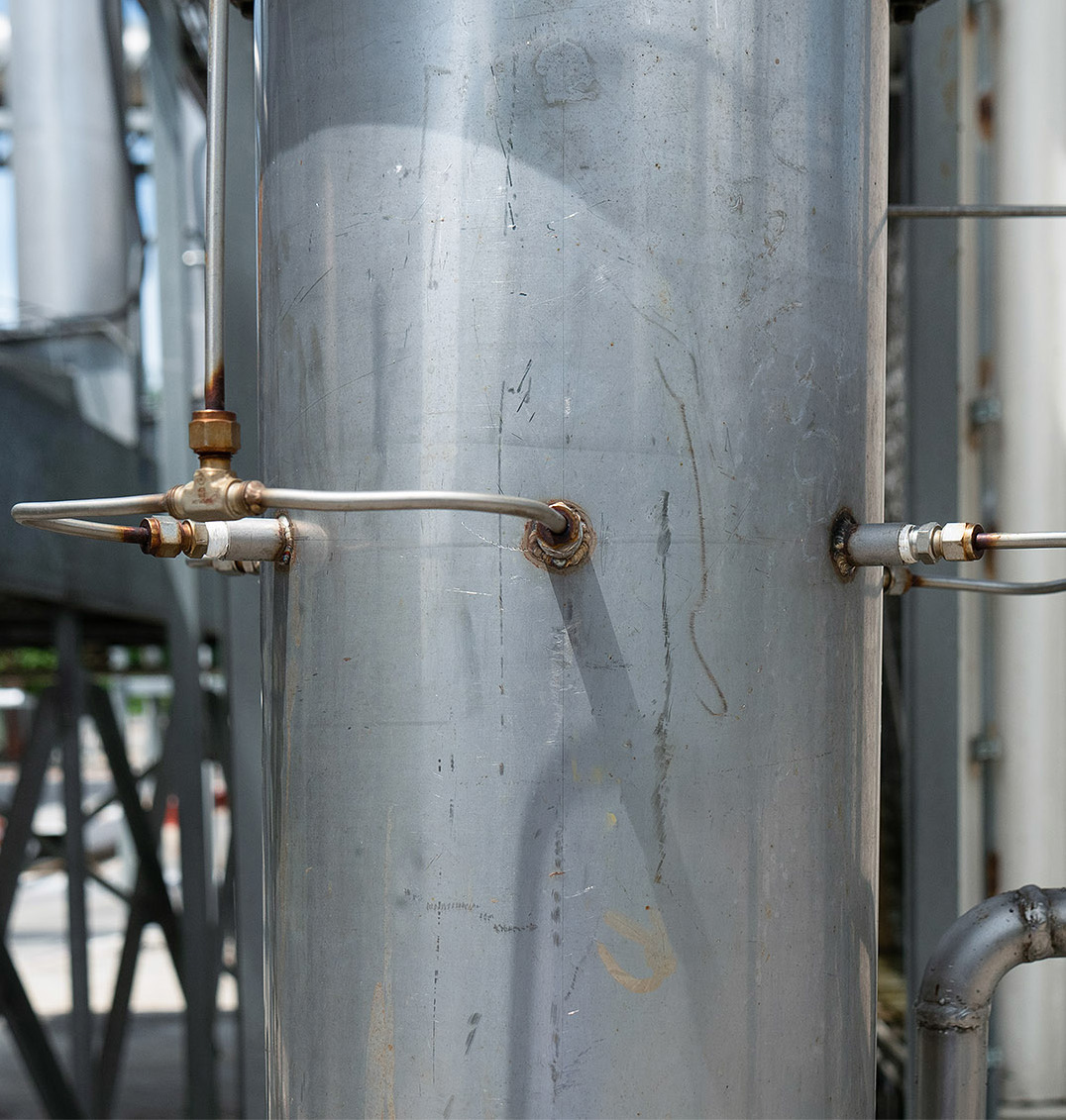PROCESSOZONE TREATMENT
The ozone treatment system consists of an advanced ozone generator, producing ozone (O3 or tri-oxygen) from the oxygen in the air (O2 or di-oxygen), including
a control unit and a dosing system. Ozone has a highly reactive oxygen atom and quickly react with smell particles that it comes into contact with.
The extra oxygen atom in the ozone attaches itself to the smell molecules, chemically changing their structure to create non-offensive molecules and thereby eliminating the smell. The
ozone treatment system is automated with sensors to ensure that the right amount of ozone is generated to match the amount of smell molecules in the rest gas stream. Ozone producing
units come in sizes described as kg ozone per hour, where 1 kg/hr is quite a large unit.
The ozone is injected all around the bottom at the outlet stack or pipe and is released high up into the air.
Burning of the smell:
As an alternative last step, the remaining smelly rest gas can be burned in a soild fuel boiler or led to the smoke stack of the steam boiler to mix with flue gas. The flue gas ions and high temperature in the boiler and stack will burn and neutralies the remaining smell molecules.
Regenerative thermal oxidiser:
This is a large, technically advanced unit that will burn and deodorise all vapours and gases from the plant and remove all smell 100%
The unit is highly efficient but very expensive and sus burners that consume fuel oil or gas which increases the operating costs dramatically.
It is mostly used for large processing plant close to cities and population

Negative pressure building and suction points.
In a protein processing plant there are also
smell from smaller sources that must be
removed, such as: – raw material bins, – small
volumes of vapor from the cooker, press and
tanks, – warm air from the meal cooler and
hammer mill and meal storage bins.
The smelly air is sucked out through smaller
diameter ducting 4 to 6 inch = 100 to 150mm
at each machine and connected to the large
ducting and finally led to a water scrubber
and bio filter by an industrial suction blower.
Negative pressure building means that air
can only enter the building through doors and
windows and only escape through the smell
removal system. There will be large ducting
and suction points high up in near the ceil,
also from the point suction ducting to remove
smelly vapor and air in a controlled manner.
The smelly vapor and air will go to a water
scrubber and bio filter for treatment.
ASTW design and supply the equipment for
these systems and give advice on how to make
the bio filter locally, using concrete walls.


